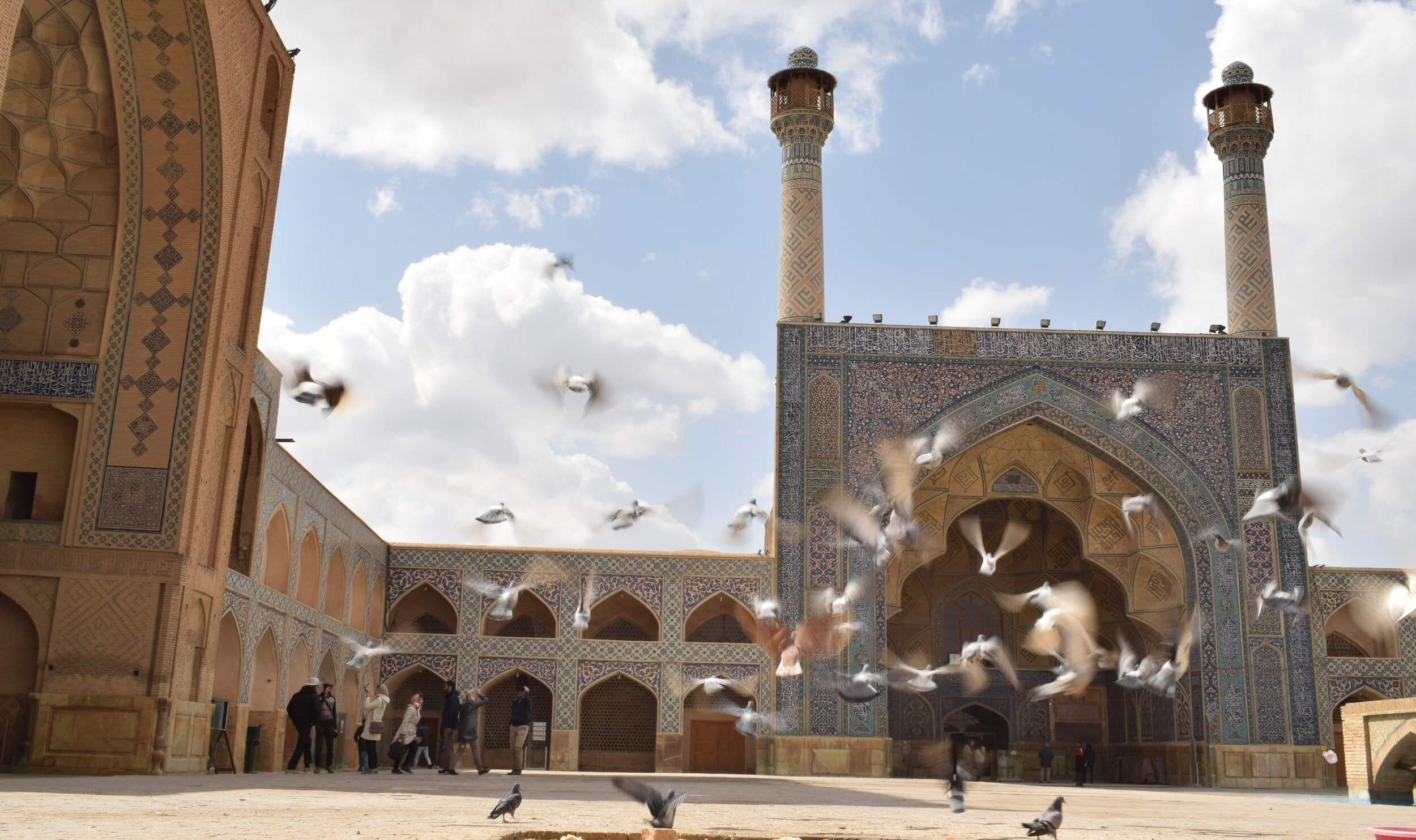The New York Times' 52 Places to Love in 2021: Unusual Times Call for Unusual Bucket Lists
Beirut, Lebanon (Photo: Etienne Boulanger)
The year from hell that was 2020 may be over, but 2021 doesn’t really feel all that different just yet. The world is still attempting to come back from the brink and fight off this accursed virus, businesses and families are still out here struggling financially due to restrictions designed to keep people safe (whether you agree with them or not is another discussion), and many industries are still flailing about with all the uncertainty that remains.
This, of course, includes the travel industry, which suffered cumulative losses totaling over $500 billion between March and December 2020, according to the U.S. Travel Association.
While travel restrictions have loosened somewhat, traveling for leisure is still discouraged by many health experts. This in mind, The New York Times decided to switch things up a little bit when it comes to their annual “52 Places to Go” list. Because “go”-ing is not exactly recommended right now, the newspaper instead asked readers to tell them “about the spots that have delighted, inspired and comforted them in a dark year.”
Thus was born the Times’ first-ever “52 Places to Love” list, a collection of destinations that have left their marks on people’s hearts. In combing through the hundreds and hundreds of submissions they received, Times travel editor Amy Virshup put it this way: “it became clear that while our list usually focuses on what is changing in a place, people can be profoundly changed by the places they have visited — and isn’t that why we travel to begin with?”
The “52 Places to Love in 2021” list includes renewed appreciation of familiar places, countries where family connections run strong, perspective-altering vacation destinations, and plenty of stops in the world’s vast wilderness, where calm and serenity reign supreme. Here are a few highlights:
The Atiq Mosque in Isfahan, Iran (Photo: Zahra Khalili)
Renewed Appreciation for the Familiar
Isfahan, Iran
Neeknaz Abari, a consultant living in Texas, says she wishes more Americans could separate Iran’s people and culture from its government. She used to travel to Isfahan every year and spend time with her grandfather, she says, but a turbulent relationship with the U.S. has made the trip more difficult in recent years. Travel site Let’s Go Iran recommends visiting Imam Square and the Grand Bazaar.
Andros, Greece
New Jersery-based writer Maria Dal Pan first visited Andros, the Greek island her family hails from, in the early ‘90s. She describes it as a place “full of life” and where the “air smells like flowers”. After taking a more recent trip with her kids in 2017, she also says she’s glad things have hardly changed. Travel agency Greeka offers this description: “Boasting a natural landscape with lush vegetation, imposing mountains, virgin beaches, and rural villages, Andros … is a go-to destination for those who crave a getaway near Athens.”
Santa Rosa, California
Loving where you live is not a luxury afforded to everyone, but Ria D’Aversa, the cofounder of a small natural wine company, says Santa Rosa is full of majesty and offers a little bit of everything — “manicured vineyards, a wonderful downtown with breweries and coffee shops, dark-green forests and snaking rivers, mountains and big agricultural valleys”. Lonely Planet lists the Luther Burbank Home & Gardens and the Charles M Schulz Museum as some of the area’s top attractions.
Bikers take to the street in Con Dao, Vietnam (Photo: Tony Pham)
Where Family Connections Run Deep
Beirut, Lebanon
Another Middle Eastern destination that Americans often hold negative perceptions of, Beirut holds a special place in Vermont-based writer and editor Carolinne Griffin’s heart. Family is the first thing that comes to mind when she thinks of Lebanon’s cosmopolitan capital, she says. Her father was born in the nearby village of Sahel Alma, and both she and her daughter were baptized in another town near there. Travel + Leisure recommends checking out the Souk el Tayeb Farmers’ Market and St. George’s Cathedral.
Aruba
A prime vacation destination in the Caribbean, the island of Aruba also happens to be a place where NYC-based marketing manager Elise Thompson’s family roots run deep. She says she loves spending time in San Nicolas, where two of her aunts still live. Thompson says much of the island is geared toward tourists these days, but there is still plenty to explore. You can find a beach just about anywhere you look, plus there’s Arikok National Park and numerous shipwrecks just waiting for your prying eyes.
Con Dao, Vietnam
Connections to particular places aren’t always necessarily positive, which is the case for lawyer and writer Thang Dac Luong, a resident of Sydney, Australia, when it comes to Con Dao, Vietnam. His father, an activist, was imprisoned on the island between 1961 and 1963 for taking part in the first coup against South Vietnam’s then-president, Ngo Dinh Diem. Thang’s relationship to Con Dao, which he’s since visited on his own, is, predictably, a complex one. You can find out more about getting to the island, and what to do when you’re there, at vietnam.travel.
The sun sets over Siwa (Photo: Flo P)
Perspective-Altering Vacation Destinations
Siwa Oasis, Egypt
Maryland resident Catherine Litten says Siwa haunts her dreams — but in a good way. The oasis, found in the Great Sand Sea of western Egypt, is “where the past, present and future seem to exist at once,” she says. It is one of the most isolated settlements in the entire country, comprised of a population of just 33,000 people, who, according to the Wikipedias, have developed a unique desert culture and a dialect and language distinct from all others in Egypt. The Fortress of Shali and Gebel Al Mawta (“Mountain of the Dead”) are not to be missed, according to Lonely Planet.
Dakar, Senegal
Art historian Faridah Folawiyo says Dakar, the capital of Senegal, is one of the few places on earth where she feels completely safe as a Black woman. She claims it is “a city that refuses to be like anywhere else,” and credits it with centering her during the shakiest periods in her life. Dakar is known for its colonial architecture, colorful streets, maze-like markets, and hopping nightclubs — and has even previously been featured on this blog in a cute piece titled “11 Capital Cities That Aren’t On Your Radar (& One Reason to Visit Each)”.
Ladakh, India
Finding a place where you truly feel at home can be tough, but that’s exactly what literature professor Jody Greene stumbled upon when she visited a Buddhist temple in the Ladakh region of India. Based in California, Greene says she now visits Tso Moriri Lake in Ladakh every year just to experience that at-home feeling again and again. Rough Guides can help you plan your trip to India’s most remote and sparsely populated region.
The sands of Wadi Rum (Photo: Andrea Leopardi)
Into the Wilderness
Wadi Rum
The term “wilderness” might bring to mind images of dense forests and gushing, hard-to-reach waterfalls, among other things, but desert-like regions fit the mold just as much as the next natural setting. Jordanian filmmaker Hashem Sabbagh says he visited Wadi Rum, a valley cut into sandstone and granite rock in southern Jordan, many times in his younger years, but it wasn’t until he returned as an adult that he was able to appreciate its majesty. I know a little something about Wadi Rum, too, having visited back in 2016 — it’s truly out of this world.
Northern Kyrgyzstan
Yogesh Mokashi, founder of a chain of restaurants in Bangalore, India, traveled to Kyrgyzstan in the summer of 2018 and found himself astonished at the vast expanses of nature, uninterrupted, for the most part, by human life. He claims he could drive for three or four hours in the country’s rural northern sections and not even come across another person. One thing’s for sure, though: the people who do live in those remote areas would love to see your face. Just ask Emil Ibakov, the man who’s trying to turn an isolated village in northeastern Kyrgyzstan into a global tourist destination.
Gates of the Arctic National Park & Preserve
Bree Kessler and I have at least one thing in common: we’re both aware that Gates of the Arctic National Park & Preserve is one of the least-visited national parks in the U.S. Where we diverge? She’s spent a lot of time there; I’ve never been. Kessler, a public-space researcher, designer and activist who lives in Alaska, says she pays a visit to the park every summer around the solstice, spending time in a Native Alaskan village called Anaktuvuk Pass. It’s a place where life slows down, she says, and where you truly experience the vastness of the Alaskan wilderness that surrounds you.
~~~
Want more? Check out the full list: “52 Places to Love in 2021”.
-LTH





